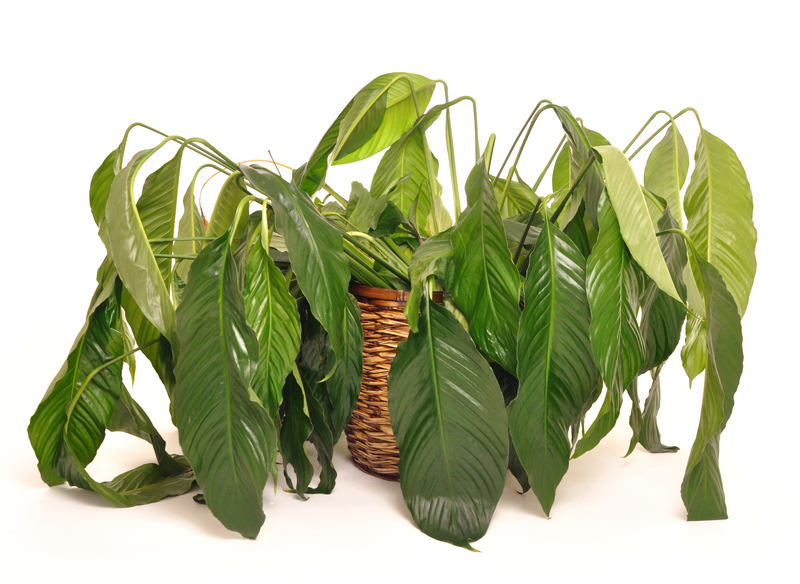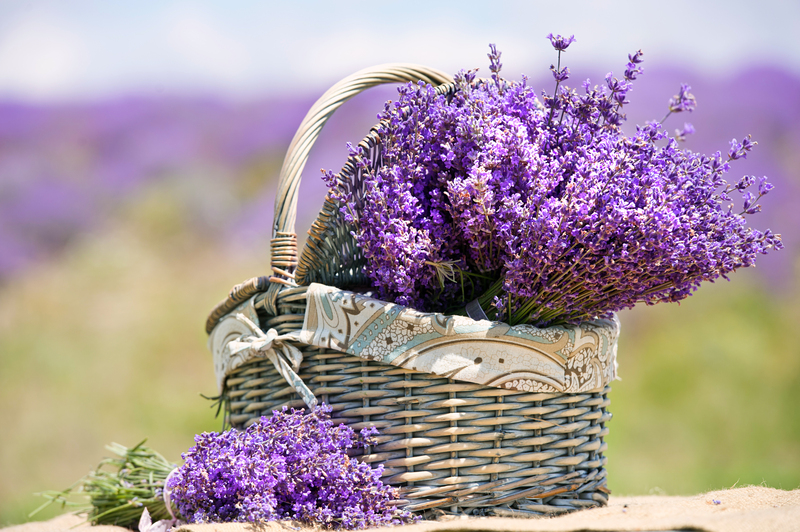Creative ways to start container gardening
Posted on 09/06/2025
Creative Ways to Start Container Gardening: A Comprehensive Guide
Are you eager to embrace gardening but limited by space, soil, or time? Container gardening offers a flexible and imaginative solution perfect for both beginners and seasoned gardeners. Whether you dream of lush balconies, productive patios, or vibrant indoor jungles, this guide will show you innovative ways to start container gardening and make the most out of your living space.

Why Choose Container Gardening?
Container gardening is all about growing plants in pots, barrels, baskets, or any creative vessel you can imagine. The growing popularity of container gardens is due to their versatility, portability, and exceptional potential for design. Here are some key benefits:
- Space-saving: Perfect for urban dwellers with limited outdoor space.
- Mobility: Shift plants for optimal sunlight or temperature.
- Soil Control: Tailor soil type for various plants.
- Pest Management: Reduce risk of soil-borne diseases.
- Accessibility: Easier to garden for people with limited mobility – no kneeling required.
Getting Started: What You Need
To begin your container gardening journey, you'll need a few essentials:
- Containers: Can be traditional planters, recycled buckets, old boots, tea tins, or even upcycled furniture!
- Quality potting mix: Provides nutrients and proper drainage.
- Plants or seeds: Choose based on location (sun/light), climate, and preference.
- Basic tools: Trowel, gloves, watering can or hose.
Imaginative Ways to Start Container Gardening
The beauty of container gardening ideas lies in their infinite variety. Here are some creative and practical approaches to kickstart your green transformation!
1. Repurpose Everyday Objects as Planters
Think outside the traditional pot! The world is filled with unconventional containers ready to breathe new life into your gardening project. Some ideas to inspire you include:
- Old boots or shoes: Poke drainage holes and fill with soil for quirky flower displays.
- Kettles and teapots: Add charm to your kitchen window garden.
- Colanders and strainers: Naturally drain excess water for herbs and succulents.
- Wooden crates or drawers: Sand and line these, then fill with trailing flowers or leafy greens.
- Recycled cans and jars: Painted or plain, they’re ideal for starting seeds and growing microgreens.
*Get creative! Upcycling reduces waste while adding personality to your container growing space.*
2. Vertical Container Gardens
Short on ground space? Go vertical! Vertical container gardening is a brilliant way to maximize walls, fences, and balconies. Try these creative vertical ideas:
- Pallet walls: Stand a wooden pallet upright, attach pots or planting bags to the slats, and load with herbs, strawberries, or lettuce.
- Hanging shoe organizers: Repurpose fabric over-the-door organizers by filling pockets with herbs and flowers.
- Tiered shelves: Staggered shelves allow sun to reach every pot and make maintenance simple.
- Rain gutter planters: Attach lightweight gutter sections to a fence for strawberries, succulents, or trailing vines.
3. Mobile and Rolling Container Gardens
Wish you could follow the sun or move plants indoors during cooler nights? Consider portable solutions:
- Wheeled carts and trays: Group pots on wheeled bases for easy movement.
- Lightweight hanging baskets: Install hooks or rails that let you adjust baskets as needed.
- DIY rolling planters: Add casters to deep planters or recycle shopping trolleys.
*Mobile gardening simplifies cleaning, rearranging, and overwintering delicate plants, giving you more flexibility with your innovative container garden setup.*
4. Self-Watering Containers
If you’re often busy or travel, self-watering containers offer convenience and water efficiency. These planters:
- Feature built-in reservoirs below the soil.
- Provide consistent moisture, reducing the risk of drought stress.
- Can be purchased or made from buckets, tote bins, or recycled bottles.
*Look for DIY self-watering containers online, or buy ready-made versions for low-maintenance container growing success.*
5. Themed Container Gardens
Make your container gardening experience even more rewarding by designing around a theme. Some creative ideas include:
- Pasta garden: Plant tomatoes, basil, oregano, and peppers together for fresh Italian flavors.
- Tea garden: Grow mint, chamomile, and lemon balm for homemade herbal teas.
- Pollinator haven: Use colorful pots with lavender, calendula, or nasturtiums to support bees and butterflies.
- Children’s sensory garden: Choose fuzzy lamb’s ear, fragrant herbs, or vibrant marigolds for little hands to explore.
Best Plants for Container Gardening
Some plants thrive in containers and offer exceptional yields or aesthetic value even in tight spaces. Consider these tried-and-true options:
- Herbs: Basil, chives, rosemary, thyme, parsley, mint.
- Leafy greens: Lettuce, spinach, arugula, kale.
- Fruiting vegetables: Cherry tomatoes, peppers, strawberries, eggplants.
- Root crops: Radishes, carrots, potatoes (using deep pots or grow bags).
- Flowers: Marigolds, petunias, pansies, impatiens, geraniums.
- Succulents and cacti: Ideal for sunny windowsills or drought-prone areas.
Pro Tips for Container Plant Selection
- Check mature size: Ensure your container is large enough for roots to grow.
- Mind light needs: Group sun-loving plants together and shade-lovers in lower-light positions.
- Mix for beauty: Combine trailing, upright, and filler plants for dramatic displays (the ‘thriller, filler, spiller’ formula).
Soil, Drainage, and Fertilization Secrets
A successful container garden starts with the right growing medium. Unlike traditional garden soil, containers demand light, fluffy, and well-draining mixes.
- Use quality potting mix: These are blended for moisture retention, aeration, and nutrient balance (avoid garden soil, which compacts and causes drainage issues).
- Ensure drainage: All containers should have holes at the bottom to avoid root rot. Adding a thin layer of gravel or broken pottery shards helps, but proper mix is key.
- Feed regularly: Potted plants require more frequent fertilization, as nutrients wash out faster in containers. Use liquid feed, slow-release pellets, or organic compost tea.
Watering: Best Practices for Container Plants
Watering routines are essential to keep container gardens healthy:
- Water deeply, not just a sprinkle: Ensure moisture penetrates entire root zone.
- Check daily in hot weather: Small pots dry out faster, especially in direct sun.
- Avoid overwatering: Don’t let water pool at the base (empty saucers regularly).
- Mulch helps retain moisture: Add a thin layer of bark, straw, or pebbles on top of the soil.
Creative Design and Arrangement Tips for Container Spaces
Arranging your containers is part of the fun! Try these suggestions to maximize your space and style:
- Create groupings: Cluster pots of different heights and diameters for visual interest.
- Use color strategically: Bright containers add cheer to dull spaces and spotlight favorite blooms.
- Play with levels: Tiered plant stands, wall shelves, or hanging arrangements add dimension.
- Personalize: Paint pots, add labels, or use mosaics for artistic flair.
Start Small, Dream Big
You don’t need a sprawling garden to enjoy the satisfaction of home-grown plants or the joys of creative container gardening. A single windowsill, a small balcony, or a sunny kitchen corner can become an oasis with the right containers, soil, and imagination.
Common Mistakes to Avoid in Container Gardening
Even creative gardeners can stumble! Here are a few pitfalls (and fixes) to ensure your container garden thrives:
- Skipping drainage holes: Roots may rot without them. Always drill or poke holes if missing.
- Using the wrong soil: Garden soil may cause compacted, soggy roots. Always use potting mix.
- Overcrowding: Plants need space. Avoid cramming too many seedlings into one container.
- Ignoring sunlight requirements: Too much shade can cause leggy, unhealthy growth in most edibles and flowers.
- Not feeding enough: Nutrient-poor soil leads to spindly, unproductive plants. Feed as directed by plant variety.

Frequently Asked Questions about Starting Container Gardens
Can I Grow Any Plant in a Container?
Almost anything! While trees and shrubs may need large or specially designed pots, most herbs, veggies, and ornamentals are perfect container garden candidates. Just match pot size to roots and check plant tags for recommendations.
What Are the Easiest Edibles to Start?
Leafy greens (lettuce, spinach), radishes, bush beans, and herbs (basil, parsley, chives) are super reliable for container gardening beginners.
How Often Should I Water My Container Plants?
It varies with the plant and weather, but as a rule of thumb, check if the top inch of soil feels dry. Hot and windy spots dry out faster, so daily watering may be needed in summer.
What’s the Best Place for My Containers?
Most edibles and flowers thrive in at least 6 hours of sun, while some shade-tolerant varieties (ferns, begonias, impatiens) love indirect or dappled light. Observe your site before choosing plants!
Conclusion: Unleash Your Creativity with Container Gardening
Starting a container garden isn’t just about saving space – it’s an opportunity to express your personality, recycle, and produce fresh food or beauty anywhere. With innovative planter ideas, the right tools, and a bit of planning, you’ll enjoy bountiful harvests, colorful flowers, and the pleasure of gardening regardless of your location or experience.
So, gather your supplies, dig through your recyclables, and experiment with these creative ways to start container gardening. You may be amazed at how easy and rewarding it can be to bring green life to every corner of your world!

